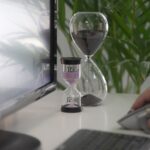As you scale your business and especially when expanding into new office space space, don’t let the layout be the last thing you consider. Done right, the space your business occupies can be a powerful tool in creating an ethos of innovation, creativity, and collaboration for your company – done wrong, it can actually inhibit these same qualities.
Yes, an effective, successful office environment stems from the company culture and leadership, but it does go beyond the intangibles. The physical environment of your work space has a powerful effect on the overall engagement, productivity, and happiness of your team. There are very simple ways to build an atmosphere that helps your team feel energized and excited to be at work.
When the original design for office cubicles was proposed, it was never intended that cubicles would create a maze of boxes. Rather than boxing people into smaller and smaller cubes, the idea was to create a honeycomb-like array that would support collaboration. Clearly, this intent has long been lost in translation within most large offices today. The ironic result is that cubicles do the exact opposite of fostering collaboration.
An open office plan is a much better alternative: it maintains a sense of openness, and people feel more connected to their teammates. This helps everyone be more sensitive to their coworkers in many ways, from moderating noise levels when talking on the phone to gauging whether it is a good moment to interrupt with a question. From a management perspective, it encourages people to remain more focused and get more done.
Another key is to create alternative work zones. This can take the form of a creativity corner, stocked with casual seating and whiteboards. There can be a silent space where people go when they need uninterrupted time to focus on a specific task. Consider a standing space for team-wide meetings. Think about making a single break room so that there is a zone that fosters casual interaction, helping people to get to know one another.
Very simply, people work better when they are happier at work, and they are more likely to stay in their jobs. A big part of this is feeling like you’re not just on a team but part of something bigger, working alongside friends. The physical office environment is a powerful way to encourage this.









